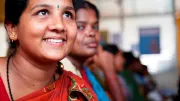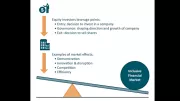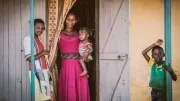Recent Blogs
Blog
When Mandating Financial Access for the Poorest Fails
Digitization of government-to-person (G2P) payments should be a financial inclusion “quick win,” but negative experiences with digital social payment programs sometimes have the adverse effect of steering low-income customers away from formal financial services. This doesn't have to be the case.Blog
Deepening Insights on Financial Exclusion Risks
Since 2011, financial Standard-Setting Bodies (SSBs) have taken fundamental steps on financial inclusion. However, a new GPFI White Paper observes that little progress has been made on understanding financial exclusion risks. What are these risks, and what can be done to address them?Blog
Revitalizing the Self-Help Group Movement in India
Growth of the self-help group movement in India has slowed in the past five years. How can challenges be overcome to improve and revitalize these programs?Blog
Done Right, Digital Finance Could Transform Humanitarian Response
Recognizing the transformative role digital innovation can play in humanitarian response, CGAP, MasterCard and UNCDF co-hosted a high-level panel at the World Humanitarian Summit. How can digital finance work to build a bridge from response to resiliency?Blog
Gender & Geography: Women-Owned SMEs in the Middle East
Women entrepreneurs in the Middle East face greater challenges than men in trying to access financial services. Providing women-owned SMEs with specific types of support will work to promote inclusive economic growth in the region.Blog
Want to Improve Customer Experience? Here’s Your Playbook
A delightful customer experience–rooted in a deep understanding of customer needs–is key for any FSP looking to increase use of services among low-income customers. Where to start, and how to do it effectively? A new Customer Experience Playbook offers insights.Blog
How Can Indirect Deposit Insurance Work in Digital Finance?
It is increasingly important to ensure that digitally-stored funds are protected against the failure of institutions offering these products. The indirect (or 'pass-through') approach to deposit insurance is raising questions with big implications for financial inclusion.Blog
Optimizing for the Next Billion Users
Across emerging markets, smartphone adoption is opening up an increasingly clear opportunity for multifaceted financial services. However, a range of technical constraints still hold some users back. Here are three ways to optimize for a more inclusive future.Blog
Can Smartphones Help the Poorest Escape Extreme Poverty?
Trickle Up is piloting a project integrating smartphones into Graduation programs in India, affording a valuable opportunity to explore the potential role of technology in improving and scaling the delivery of the Graduation approach to ultrapoor women in remote areas.Blog
Can Equity Investors Contribute to Building Inclusive Markets?
Equity investing can play a broader role in building inclusive financial markets. CGAP research reveals three key leverage points that equity investors can use to engage with investees in ways that develop the market.Blog
Colombia’s Recipe for 100% Agent Coverage: Aggregation & Sharing
Universal coverage is a fundamental building block toward universal financial access. Last year Colombia announced that all of its 1,100+ municipalities had at least one banking agent serving customers in need of financial services. How did Colombia do it?Blog
Understanding Customer Inactivity with Customer Data from Kenya
Account dormancy among mobile money users is an industry-wide problem. WSBI is working to understand the driving forces behind customer inactivity in Kenya.Blog
Four Common Features of Emerging Digital Credit Offerings
Digital credit has emerged at the digital finance frontier, drawing attention from all players across the DFS ecosystem. A new CGAP brief explores the inner workings and key characteristics of digital credit offerings.Blog
Linking Mobile Banking with Village Groups in Uganda
In Uganda, WSBI and PostBank Uganda sought to encourage active individual savings for village group members while simultaneously providing efficiency gains via group lending. The solution? PBU’s low-cost VSLA Group Account, which has reached over 500,000 members.Blog
Cash: The Unsung Hero of Digital Finance
Far from being a fossilized legacy in the digital era, cash is arguably a potent tool that can help bring poor people into financial inclusion. Here’s why.Blog
Risk-Based Supervision in the Digital Financial Inclusion Era
Lack of supervisory capacity is one of the key challenges facing financial sector supervisors in emerging markets. A risk-based approach to supervision helps to strategically allocate scarce resources and to prioritize interventions according to identified risks.Blog
Achieving Financial Access through Village Banking and Data
In its work towards Universal Financial Access (UFA) by 2020, WSBI is using data to improve understanding of customer behaviors and needs.Blog
Could Energy Service Be the Key to Banking the Rural Poor?
Driving financial inclusion and expanding energy access have traditionally been considered separate development objectives. But thanks to revolutions in the distribution and financing of off-grid solar, that may be about to change.Blog
Financial Inclusion and Off-Grid Solar: Three Takeaways
Pay-as-you-go solar energy is gaining popularity in sub-Saharan Africa, and it is also playing a role in driving financial inclusion.Blog




















